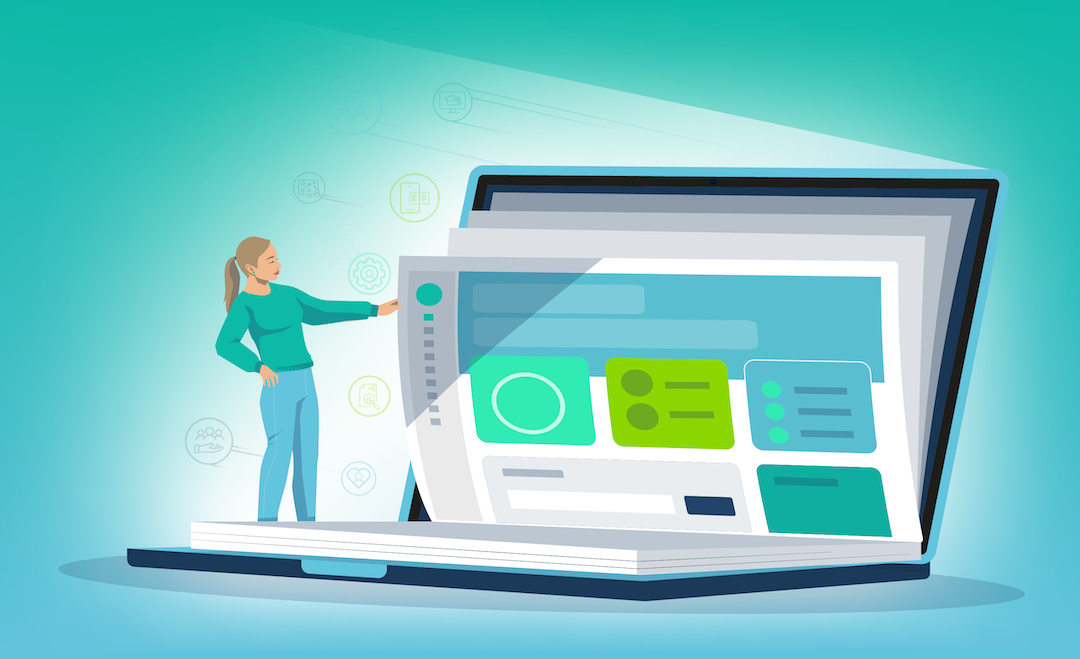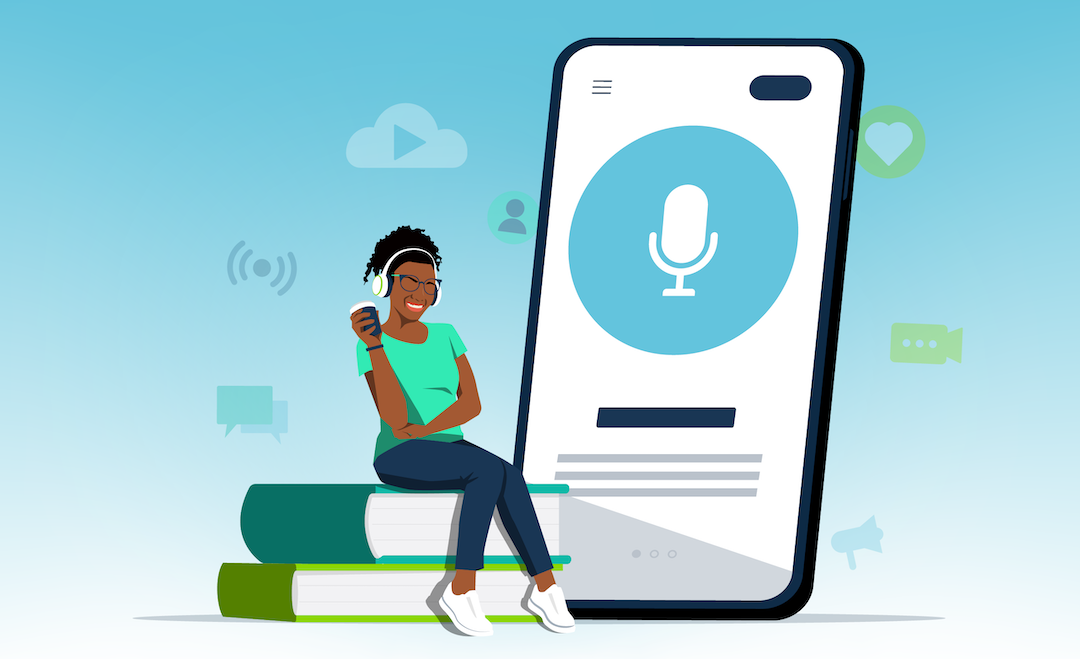
The COVID-19 outbreak upended every area of business. L&D professionals have had to adapt for a post-COVID future. This has required digitising training, cancelling face-to-face events and dealing with reboarding furloughed staff. Learning and development has never been more important!
So much has evolved since the beginning of the outbreak. It feels as if decades of change have been squeezed into each month of 2020. In fact, 95% of learning leaders say L&D has changed forever.
But what does the landscape of learning look like now? It’s of the highest priority for L&D professionals to find out.
We’ve scoured the research, read surveys, scrutinised reports and reflected on the predictions of leading analysts. As a result, we have found the eight areas of L&D most impacted by coronavirus that L&D professionals need to know about. They are:
- The Digitisation of Learning
- Remote Working
- Agile Learning
- Employee Wellbeing
- Changing L&D Budgets
- Company Culture
- Long-term Development of Staff
- Socially Distanced Learning
1: Digital Transformation Has Arrived! (Again…)

Senior leaders in business have been talking about digital transformation since the 1990s. You would have thought that by now global businesses would have it done and dusted.
As it turns out, this is not the case. For many businesses, digital transformation projects kept getting pushed to the back of the queue. It’s like the remodelled kitchen you started work on six years ago but never found time to finish. Digital transformation was the vital job that never got finalised.
But, COVID-19 changed that. Suddenly, more than 50% of the world’s population was in lockdown and the digital transformation was business-critical.
Businesses lagging behind with their own digital transformation scrambled to sort something out. Other businesses which thought they had it nailed down found out they couldn’t handle a socially distanced world.
Online Learning Has Arrived! (Again…)
Like every other area of business, L&D departments have all been working to find a digital home. The vast majority of businesses had started their journey, but only a small minority had completed it when the pandemic hit.
A recent Fosway report demonstrated this in illuminating detail:
In 2018 Fosway asked: ‘Where Are You In Your Journey With The Digital Transformation of Learning’:
- 4% said it was completed
- 69% said it was still in progress
- 23% said they were still in the planning phase
- The rest said it wasn’t applicable to their business
In 2020, months into the COVID outbreak, Fosway asked: ‘Where Are You In Your Journey With The Digital Transformation of Learning’:
- 15% said it was completed (up 11%)
- 76% said it was in progress (up 7%)
- 9% said they were in the planning phase (down 14%)
- None said it was no longer applicable
Speaking of this rapid shift, Andy Lancaster, Head of L&D Content at the CIPD, said the following:
“Coronavirus has forced our hand. It is a catalyst for long-overdue learning innovation.”
Businesses have been talking about online learning for a long time. But 2020 marks the moment L&D crossed this particular Rubicon.
And The Future?
Digital transformation is a continuum of change. Once L&D departments across the world take the first step towards a digital learning culture, very few will walk it back.
Instead, learning departments will be working hard to improve their online learning solutions. Like those who pioneered online learning before them, they will have to reckon with learner engagement and managing the blended learning mix.
2: Is Remote Working Here To Stay?
“The notion of putting 7,000 people in a building may be a thing of the past.”
Jess Staley, CEO of Barclays Bank
People have been saying things like this ever since IBM pioneered remote working back in 1979. What makes this remark different is that it was made in light of the Coronavirus pandemic.
The pandemic forced many businesses to go remote that otherwise wouldn’t have. For months offices remained desolate. Most employees in Europe, Asia and America gave up the commute and started working from dining rooms, kitchens and summer houses.
For many, the biggest surprise was how quick and easy the transition was. After all, businesses had been talking about how hard it would be for years.
Will Businesses Go Back To The Office?
Most businesses that moved to a remote work model in 2020 were forced to by circumstance.
The question is whether they will expect staff back in the office once this is all over. Before 2020, almost half (46%) of employees felt a remote work stigma. Back then, most companies would have wanted their staff back in offices.
But 2020 is a whole new world! Opinions are changing. Recent surveys indicate that most businesses won’t expect their staff back in the office any time soon:
- 59% of CFOs are worried about a second wave of infections.
- 54% of CFOs plan to make remote work a permanent option.
- 72% of employees are more productive or equally productive when working from home.
- 25% of businesses are already thinking about cutting back on real estate.
In our post-lockdown world, we’re done with the remote work stigma! Or as Ernst and Young put it:
“Remote working is here to stay and will more than ever become an integral part of the way we work. Now is the time for companies to prepare for this ‘back to the new normal’.”
What Does Remote Work Mean for The Future of L&D?
The shift to remote work puts a spotlight on the difference between office workers and everyone else. Data from the US Bureau of Labour Statistics found that only 29% of employees are able to work from home.
What about the 71% who can’t? Well, they’re the construction workers, the restaurant servers, the healthcare workers, the delivery truck drivers, the lumberjacks, the miners… Everyone who can’t do their job sat at a desk.
A lot of them are what we’ve now come to know as key workers.
For learning professionals, remote work highlights two important points:
- Don’t forget about your front-line workers.
It can be easy to focus on your information workers and on delivering training to help them grow. This is partly why management and leadership training are perpetual hot topics.
But, for your business to thrive, your front-line workers need just as much development.
- The Diffusion of Staff
As businesses get bigger and technology gets more powerful, employees have a wider geographic distribution.
It’s getting harder and harder to coordinate training for a business using face-to-face options alone. Remote work makes this challenge even more difficult.
This means learning professionals need flexible technologies to help them deliver training to learners in a range of different situations.
3: Agile Learning To Respond to a Changing Environment
Business agility is an idea born out of software development. It describes the need to be responsive and flexible. It recognises that you can never have complete control of your environment.
This idea snuck its way into broader business thinking. It then made its way into the online learning world in the form of agile learning. But agile learning never took off.
Until now, it would seem.
Businesses have had to pivot faster than ever as a result of COVID-19. Many learning leaders (Example #1, Example #2 and Example #3) think this is the tipping point for a more agile approach to L&D.
Why Agile Learning Now?
In a volatile environment, learning departments need to remain flexible as business priorities shift.
If businesses are going to empower their staff to respond to a changing world, then new strategies are needed. The typical two-month instructional design process won’t be possible for every piece of content. Neither will each purchase have time for a six-month procurement process.
Tips To Build an Agile Learning Culture
- A rapid authoring tool will help you turn content around faster than ever. For example, Genie makes it possible to create eLearning up to eight times faster than the market leader.
- A mobile learning app, like The Knowledge Arcade, democratises learning. You can create knowledge-sharing clubs in a matter of minutes. If knowledge needs to be shared urgently subject matter experts can create and share content instantly.
- Mobile solutions also allow you to harness the power of push notifications. This means you can immediately alert learners to the content they need to know.
4: Employee Wellbeing Is Centre Stage
We are in the midst of a mental health awakening. Attitudes towards mental health have transformed over the past ten years. And even more so in 2020.
In fact, it’s now known that roughly one in four people will struggle with their mental health at some time in their lives.
COVID-19 was like a catalyst to the growing acceptance of mental health issues. Factors like loneliness, the uncertain future and worry for loved ones meant anxiety became more common and in turn, better understood.
This led businesses across the world to take a more active role in staff wellbeing. Employee wellbeing is now seen as a strategic priority for a multitude of reasons. The most important are:
- An increase in productivity
- A boost in innovation
- Building a positive employer brand to attract new talent
- Employees are less likely to ‘burn out’, reducing time out of work
So why wouldn’t you take better care of your staff? It’s a situation in which everybody wins! Not only are your staff happier, but the business is better equipped to hit key targets.
The Role of L&D in Employee Wellbeing
Employee wellbeing is a team effort across the organisation. Everyone needs to pull together to change company culture for the better.
The role L&D plays in improving employee wellbeing is educational. There are five key ways you can do this:
- Train your leaders so they have a better understanding of mental health and wellbeing.
- Provide educational material for employees to help them better understand how they can improve their own wellbeing.
- Provide resilience training for your staff. Some aspects of emotional wellbeing can be learnt. Where this is the case, L&D should do what they can to support.
- Use empowering features on your learning platform to give staff a voice. Whether that’s surveys, forums or social clubs, there are plenty of different ways you can use your learning tools for staff listening.
- Develop staff in their role to better equip them to do their job. Few things are worse for your mental wellbeing than a sense of helplessness!
5: Cautious Spending
When times get tough, the vast majority of businesses cut spending. After the 2008 financial crash, many businesses cut investment in L&D. For some, the 2008 deja vu feels all too real.
But the 2020 business environment is different.
L&D has never been more important. The world is changing so fast people need constant training to keep up! This means that learning and development is essential to prepare staff for the future.
L&D now has the extra advantage of having learned important lessons from the 2008 crash. Lessons like:
- The importance of communicating business impact
- Focusing on ROI
- Using digital technology to power up your training
L&D And Business Impact
Learning professionals need to think in terms of business impact. This is the strategic mindset of using the tools available to reduce risk, increase return on investment and help your organisation hit key business goals.

Fosway’s research into the changes caused by COVID-19 found that the following learning approaches give the most impact for your money:
Focus spending in these areas to get the biggest impact for your business.
6: Maintaining Company Culture Is Both Harder and More Important
Company culture is important. It can help even the biggest organisations to work like a well-oiled machine.
An organisation’s culture is made up of its structure, tools, mission, values, behaviours, beliefs and… its workplace.
When employees work in an office all day, culture can happen as if by accident. When you take away the office-based interactions, many employees start to feel isolated.
Even though company culture is much more than the office building, it’s still the location employees associate with company culture. It’s a bit like the way a football team is much more than its stadium, but a stadium holds a special place in the hearts of its team’s fans.
Now that most employees are working from home where possible, businesses need to work even harder at maintaining culture.
The Role of L&D In Company Culture
L&D will need to work with other departments to safeguard company culture. The two areas where L&D can best contribute are:
- Communicating your business mission.
The office is not the hub of your company culture. This role is taken up by your business mission. After all, companies aren’t just groups of people who all do jobs in the same building. They’re communities of people all working towards the same goal to realise the same mission.
- Providing digital spaces for your community.
Online tools, particularly mobile learning apps, are the next best thing to meeting in person. Learners are able to share videos, post on social walls and feel part of the company culture. This keeps morale pumping no matter how tough things might get!
7: A Renewed Focus on Long-Term Development
During uncertain times people are much less likely to take risks with their career. Employees are less likely to move to a new company, and if they do, it’s much less likely to be a big career change.
It’s also more important for businesses to retain talent during a downturn than it would be otherwise. Due to people’s risk aversion, it becomes harder to attract new staff.
This means businesses need to invest more in the staff they have. Firstly, because it will help retain them, secondly because they’re more likely to be around for a longer period.
L&D has an important role to play in staff retention and staff development.
Staff Retention
87% of millennials rank professional development as a key reason to stay with a company. This means businesses need learning platforms to help deliver personalised development to their staff, even if they aren’t in the office.
Staff Development
The longer staff stick around, the more important it is for the business that they’re growing. This means that now is the perfect time to invest in your leadership programmes and to double down on current efforts to spot talent and fast-track them into leadership roles.
Social learning tools are the best way to spot your organization’s future leaders. You can easily see who cares about the culture of your business and is a natural leader just waiting for you to develop them!
8: Socially Distanced Learning
In 2019, 40% of all training in U.S. businesses was classroom-based. For the time being at least, all classroom training needs to pause, move online or adhere to social distancing guidelines.

What Alternatives Are Available to L&D?
Digital Classrooms
85% of businesses are using digital classrooms to support their blended learning strategy. This is an easy option as instructors are able to deliver the exact same classroom session as before. No rewrite required!
However, maintaining employee engagement with online classrooms is notoriously difficult. In a world of Zoom fatigue, many employees find the option to turn off the video camera and lose focus all too tempting.
Social Clubs
An easy alternative to a digital classroom is to use a social club on your learning platform. What would have been a classroom session can become an ongoing forum. This creates a space where learners and experts alike can ask and answer questions whilst sharing best practices.
The Knowledge Arcade even has a live streaming feature for social clubs. This makes your training coordinators’ jobs easier than ever before! They simply set up and start streaming from their own home office. If learners are able to, they can join in, ask questions and take part. If not, the video can be saved, added to your library and shared on the social feed.
Socially Distanced Classrooms
There is a persuasive business argument against exposing staff to any unnecessary risk. But, in some cases socially distanced classrooms will be essential to the smooth running of your business.
However, this won’t be without its challenges. Social distancing guidelines require that classroom capacity be greatly reduced. This means smaller classes, in turn meaning more classroom sessions and more expense to your business.
Final Word
This is only some of what the future has in store. These eight predictions are based on research, evidence and the thoughts of leading analysts. But nonetheless, the future remains uncertain. As such, L&D professionals should always be prepared for a crisis!
At Growth Engineering we believe that learning and development has never mattered more than it does right now. Times of crisis can become times of change for the better.
But change for the better doesn’t happen on its own.
Businesses need people with a vision of the future to stand up and add their voice to the conversation.
We have a vision of the future that goes beyond the predictions shared above. We’re excited about what’s possible and we’re working hard to bring it about.
If you want to find out more read The Growth Engineering Manifesto. It lays out our vision of the very best that Learning and Development can be! Click the image for your copy!









